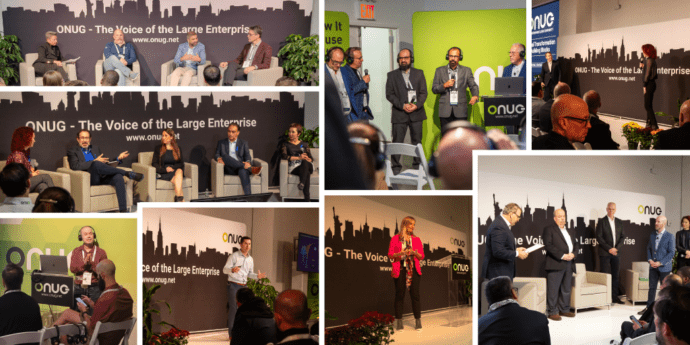Evolving IT Networks from Legacy Silos to Radical Responsiveness
by Ichiro Fukuda
Enterprise companies have historically organized themselves around functional silos such as R&D, marketing, and sales that focus largely on their own respective value chains and fiercely independent agendas. The nature of the network and IT infrastructure that therefore evolved to accompany this kind of business structure naturally emulated its lack of openness, sharing of information, and insights. As industries have undeniably become global and the speed of response that they demand has increased exponentially, enterprise organizations are feeling the heavy economic burden of the constraints of legacy business and technology structures built around these old philosophies.
If today’s customer or business partner needs to nimbly move across many touch points in an organization, then the processes and the technology that enables organizations to act and respond – must move with equal facility and agility. Formidable value can be found in a company’s ability to respond to the non-linear behaviors of customers and markets. Those who cannot, or refuse, to embrace this change will not just be relegated to the role of reactive follower in the near future, but will most likely become economic dinosaurs.
Three Key Limitations of Today’s Enterprise IT Environments
IT leaders face significant challenges brought about by years of entrenched practices and technology investment.
1. Rigid Silos
With business practices moving away from silos, those who run IT infrastructure and networks must be counted upon to do the same. Efficient and unified connectivity across the enterprise is now a requirement. Silos prevent real solutions to questions of linking public and private clouds, corporate VPN sites, and even IoT sensors, into a seamless and elegant network.
Management of those old technology silos must change as well with stakeholders letting go of the self-serving agendas of the past. Their agendas must become one and the same – the creation and support of a powerful and flexible full technology stack across the organization.
2. Complex Multi-Vendor Environments
Choice brings complexity of initial purchase, deployment, and maintenance of IT. Most enterprise IT and network environments are multi-vendor in terms of both hardware and software, with various appliances at the edge and multiple flavors of public/private cloud and corporate network environments. With the need to manage updates to devices, optimized cloud environments, and internal networks – how can anyone possibly manage that knowledge base and keep everyone up to date, much less trouble shoot problems and incursions?
3. Systems Unprepared for the Rising Importance of Apps
Legacy technology was put in place well before the recent rise of the importance of apps in bringing new capabilities to a nimble enterprise. For many organizations, apps are now the key drivers of real business value. We need to create a new environment in which the speed and ease of deployment of apps is optimized.
So what’s a CIO or IT/network executive to do? How do you move to technology that supports the radical responsiveness that business demands when you are saddled with the technology legacy of the past?
Moving IT from Rigid Silos to Radical Responsiveness
To move from a history dominated by silos to a near future defined by radical responsiveness, IT executives need to develop new ways of building out networks, deploying and servicing apps, and flexibly integrating multiple network function vendors. They need to be able to do this with an approach that reduces cost and complexity, while increasing control – across the full technology stack, not merely the network.
- 1. Reduce Costs
- Management (setup and service) of infrastructure, network function, network products, and applications from a single cloud-based console.
- Bandwidth cost management through lower reliance on Telco networks.
- 2. Reduce Complexities
- Simpler device management with network functions supplied as a service.
- Easier network monitoring and troubleshooting through software in a multi-vendor environment, without abandoning past IT infrastructure investments.
- Decreased human capital burden on network/IT experts through smart software and dashboards.
- 3. Increase Control
- Security, usage and other polices provided as services.
- Greater ability to rapidly and flexibly deploy changes from the cloud out to the edges of the network.
These are not problems that will be solved, or benefits that will be delivered, by today’s SDWAN offerings. The enterprise technology future that we need to build together requires us to think and act in a way that is truly more open and flexible than our past practices. The world demands it.
Author bio

Ichiro Fukuda
Chief Architect, Infrastructure
NTT Innovation Institute, Inc.
Ichiro has been working on realizing NTT’s Cloud and Software-Defined-Networking vision. Prior to joining NTT Innovation Institute, Ichiro worked for NTT Communications leading various development projects including ATM and IP/MPLS technology based network service. He holds M.E. and B.E. degree from Waseda University.


